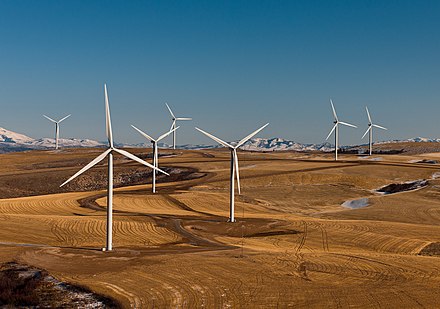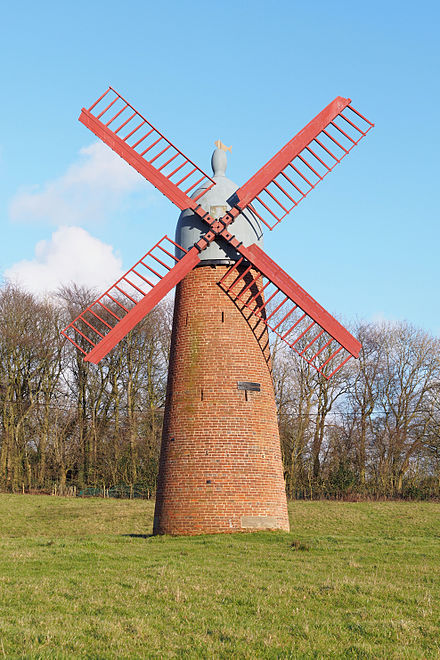
La energía eólica es el uso de la energía del viento para generar trabajo útil. Históricamente, la energía eólica se utilizaba mediante velas , molinos de viento y aerobombas , pero hoy en día se utiliza sobre todo para generar electricidad. Este artículo trata únicamente de la energía eólica para la generación de electricidad. Hoy en día, la energía eólica se genera casi en su totalidad con aerogeneradores , generalmente agrupados en parques eólicos y conectados a la red eléctrica .
En 2022, la energía eólica suministró más de 2.304 TWh de electricidad, lo que supuso el 7,8% de la electricidad mundial. Con unos 100 GW añadidos durante 2021, principalmente en China y Estados Unidos , la capacidad mundial de energía eólica instalada superó los 800 GW. 32 países generaron más de una décima parte de su electricidad a partir de energía eólica en 2023 y la generación eólica casi se ha triplicado desde 2015. Para ayudar a cumplir los objetivos del Acuerdo de París para limitar el cambio climático , los analistas afirman que debería expandirse mucho más rápido, en más del 1% de la generación de electricidad por año. ( Artículo completo... )

La energía eólica se convirtió en una fuente de energía importante en Australia del Sur durante las dos primeras décadas del siglo XXI. En 2015, había una capacidad instalada de 1.475 MW, lo que representaba el 34% de la producción de electricidad en el estado. Esto representó el 35% de la capacidad de energía eólica instalada de Australia. En 2021, había una capacidad instalada de 2052,95 MW, lo que representó el 42,1% de la producción de electricidad en el estado en 2020.
El desarrollo de la capacidad de energía eólica en Australia del Sur se ha visto alentado por una serie de factores, entre ellos, el Objetivo de Energía Renovable del Gobierno australiano , que exige a los minoristas de electricidad que obtengan una proporción de energía de fuentes renovables, incentivos del Gobierno de Australia del Sur que incluyen un régimen regulatorio de apoyo y un plan de devolución de impuestos sobre la nómina para desarrollos de energía renovable a gran escala. Además, la proximidad del estado a los Rugientes Cuarenta significa que existen recursos eólicos de alta calidad para que los exploten los parques eólicos . A mediados de 2009, el Gobierno de Australia del Sur creó RenewablesSA para fomentar una mayor inversión en energía renovable en el estado. ( Artículo completo... )










.jpg/440px-Myreagre_Mølle_(Bornholm).jpg)

_from_SE_2_long.JPG/440px-Schwartz_farm_(Lane_Co_KS)_from_SE_2_long.JPG)


Un molino de viento es una estructura que convierte la energía eólica en energía rotacional mediante aspas llamadas aspas , tradicionalmente utilizadas específicamente para moler granos ( molinos harineros ), pero en algunas partes del mundo angloparlante, el término también se ha extendido para abarcar bombas eólicas , turbinas eólicas y otras aplicaciones. El término motor eólico también se utiliza a veces para describir dichos dispositivos. ( Artículo completo... )

¿Tienes alguna pregunta sobre Energía eólica y no encuentras respuesta?
Considere preguntarlo en el mostrador de referencia de Wikipedia .
Los siguientes proyectos hermanos de la Fundación Wikimedia proporcionan más información sobre este tema: